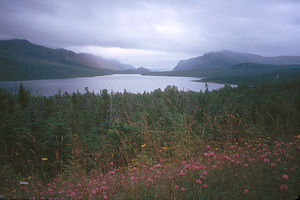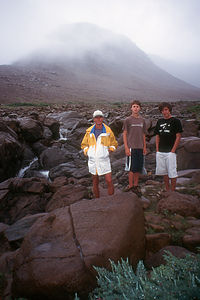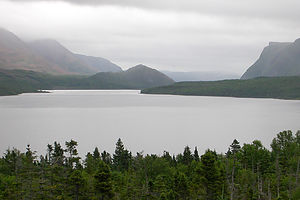- Home
- About
- Map
- Trips
- Bringing Boat West
- Migration West
- Solo Motorcycle Ride
- Final Family XC Trip
- Colorado Rockies
- Graduates' XC Trip
- Yosemite & Nevada
- Colorado & Utah
- Best of Utah
- Southern Loop
- Pacific Northwest
- Northern Loop
- Los Angeles to NYC
- East Coast Trips
- Martha's Vineyard
- 1 Week in Quebec
- Southeast Coast
- NH Backpacking
- Martha's Vineyard
- Canadian Maritimes
- Ocracoke Island
- Edisto Island
- First Landing '02
- Hunting Island '02
- Stowe in Winter
- Hunting Island '01
- Lake Placid
- Chesapeake
- Provincetown
- Hunting Island '00
- Acadia in Winter
- Boston Suburbs
- Niagara Falls
- First Landing '99
- Cape Hatteras
- West Coast Trips
- Burning Man
- Utah Off-Roading
- Maui
- Mojave 4WD Course
- Colorado River Rafting
- Bishop & Death Valley
- Kauai
- Yosemite Fall
- Utah Off-Road
- Lost Coast
- Yosemite Valley
- Arizona and New Mexico
- Pescadero & Capitola
- Bishop & Death Valley
- San Diego, Anza Borrego, Joshua Tree
- Carmel
- Death Valley in Fall
- Yosemite in the Fall
- Pacific Northwest
- Utah Off-Roading
- Southern CA Deserts
- Yosemite & Covid
- Lake Powell Covid
- Eastern Sierra & Covid
- Bishop & Death Valley
- Central & SE Oregon
- Mojave Road
- Eastern Sierra
- Trinity Alps
- Tuolumne Meadows
- Lake Powell Boating
- Eastern Sierra
- Yosemite Winter
- Hawaii
- 4WD Eastern Sierra
- 4WD Death Valley +
- Southern CA Deserts
- Christmas in Tahoe
- Yosemite & Pinnacles
- Totality
- Yosemite & Sierra
- Yosemite Christmas
- Yosemite, San Diego
- Yosemite & North CA
- Seattle to Sierra
- Southwest Deserts
- Yosemite & Sierra
- Pacific Northwest
- Yosemite & South CA
- Pacific Northwest
- Northern California
- Southern Alaska
- Vancouver Island
- International Trips
- Index
- Tips
- Books
- Photos/Videos
- Search
- Contact
Gros Morne National Park (Trout River), NFL
Monday, July 19, 2004 - 9:00am by Lolo
170 miles and 4 hours from our last stop - 1 night stay
Travelogue
We left Route 430 in the town of Wiltondale and headed west on Route 431 to explore the southern section of Gros Morne National Park. Since the northern and southern sections of the park are separated by Bonne Bay, visiting the southern section meant driving out and back about 30 miles each way. From what we had read in the guide books though, it sounded like Trout River Pond was worth it. Also, the campground at the end of the 30 miles was supposed to have great views of the pond, which actually wasn’t a pond at all, but rather a 9-mile long landlocked fjord.
 Trout River PondI was starting to get a little concerned about the weather. Yesterday on the ferry it had been so sunny and promising, but now a thick fog had moved in, and it looked like it was here to stay. There were two things we had feared about a trip to Newfoundland—the weather and the bugs. We hadn’t had any problems with bugs yet (that would come later), but the weather certainly looked like it was going to be a challenge. In fact the name “gros morne” actually means “big gloomy” because of the fog and clouds that often just hover in the valleys.
Trout River PondI was starting to get a little concerned about the weather. Yesterday on the ferry it had been so sunny and promising, but now a thick fog had moved in, and it looked like it was here to stay. There were two things we had feared about a trip to Newfoundland—the weather and the bugs. We hadn’t had any problems with bugs yet (that would come later), but the weather certainly looked like it was going to be a challenge. In fact the name “gros morne” actually means “big gloomy” because of the fog and clouds that often just hover in the valleys.
Our first stop was at the Tablelands Overlook to see the area that had made this part of the park a World Heritage Site. What looked to me like any old rocky plateau of rust-colored rocks was actually a geologist’s paradise—a section of the earth’s mantle brought to the surface by Continental Drift. Geologists come here from all around the world to experience this unique opportunity to study the earth’s inner core close up.
 Herb and Boys on Tablelands hikeWhile gazing out at the Tablelands and trying very hard to be appropriately geologically moved, we happened to notice a video camera on a tripod in the corner of the otherwise deserted parking lot. Closer inspection of the equipment revealed that the camera was actually still filming. How strange and creepy! Where was the owner? What could possibly make someone, voluntarily at least, leave behind thousands of dollars worth of state-of-the-art equipment? We weren’t quite sure just what we should do. The imminent threat of rain and the belief that the next person that came along would most likely keep the equipment, convinced us to take it and turn it over to the Park Rangers at the Trout River Campground. I think they were quite surprised when we did. They radioed our find to the various ranger stations in the park and had us fill out some forms. They informed us that if no one claimed it in 6 months it would be ours. I wasn’t sure what to root for. This was the video camera that Herb has been lusting for.
Herb and Boys on Tablelands hikeWhile gazing out at the Tablelands and trying very hard to be appropriately geologically moved, we happened to notice a video camera on a tripod in the corner of the otherwise deserted parking lot. Closer inspection of the equipment revealed that the camera was actually still filming. How strange and creepy! Where was the owner? What could possibly make someone, voluntarily at least, leave behind thousands of dollars worth of state-of-the-art equipment? We weren’t quite sure just what we should do. The imminent threat of rain and the belief that the next person that came along would most likely keep the equipment, convinced us to take it and turn it over to the Park Rangers at the Trout River Campground. I think they were quite surprised when we did. They radioed our find to the various ranger stations in the park and had us fill out some forms. They informed us that if no one claimed it in 6 months it would be ours. I wasn’t sure what to root for. This was the video camera that Herb has been lusting for.
We got a campsite for the night, but I was quite disappointed to find that the views of Trout River Pond that the guide book raved about were only possible from 2 of the campsites, both of which, of course, were taken. The rest of us got to look at a bunch of bushes. Since there was nothing to do at the campground, Herb went for a run while the boys and I biked down the dirt road to the Day Use Area to see what kind of fun we could stir up. The boys are usually pretty good at this and can make even the most mundane activities seem quite exciting.
 Trout River PondWe decided to try to bike the hiking trail along the shore of the pond, which I had read about in the guide book. The trail traces the shore of the pond for 4 ¼ miles to a point called the Narrows, where the cliffs almost pinch the pond in two. It’s supposed to be quite impressive. Should be a piece of cake by bike—or so we thought. The trail started off along a narrow boardwalk, raised about 2 feet above the ground, which totally freaked me out for some reason. My bike, which I normally ride quite proficiently, was wobbling madly back and forth, precariously close to the edges of the boardwalk, quite to the boys’ amusement. From there the trail proceeded up and down a steep, root-strewn path that obviously was not meant for biking. Needless to say, the kids thought it was great. I admire their spirit! I, however, had already dismounted my bike and was lugging it over roots and up hills so steep that the bike almost fell back down on me. Finally, I convinced the boys to turn back, although I did regret not getting to see the Narrows.
Trout River PondWe decided to try to bike the hiking trail along the shore of the pond, which I had read about in the guide book. The trail traces the shore of the pond for 4 ¼ miles to a point called the Narrows, where the cliffs almost pinch the pond in two. It’s supposed to be quite impressive. Should be a piece of cake by bike—or so we thought. The trail started off along a narrow boardwalk, raised about 2 feet above the ground, which totally freaked me out for some reason. My bike, which I normally ride quite proficiently, was wobbling madly back and forth, precariously close to the edges of the boardwalk, quite to the boys’ amusement. From there the trail proceeded up and down a steep, root-strewn path that obviously was not meant for biking. Needless to say, the kids thought it was great. I admire their spirit! I, however, had already dismounted my bike and was lugging it over roots and up hills so steep that the bike almost fell back down on me. Finally, I convinced the boys to turn back, although I did regret not getting to see the Narrows.
That evening the kids played Frisbee and Herb and I had a glass of wine in the campground picnic area, which actually did have a nice view of the Trout River Pond. However, soon as dusk began to fall, we were greeted with Newfoundland’s second challenge—bugs, and lots of them. We quickly retired to the safety and comfort of our motor home.
The next morning we arose to the sound of a steady rain hitting the roof of the RV, so we decided to sleep in. A short time later, we were awakened by a knock on our RV door, a sound which always fills me with apprehension. Standing out in the rain was a woman, who identified herself as the owner of the camera equipment we had turned in the day before. She thanked us profusely and explained that she was the Artist in Residence at Gros Morne this month and that some of her work was on display at the Discovery Center. We were glad that we had been able to help her, but I must admit that getting that camera in 6 months sure would have been nice.
Despite the rain, we stopped at the Tablelands on the drive out to hike the 2 ½ mile trail through sections of the earth’s mantle. It just had to be done, rain or shine. We caught up with a ranger-led walk and got to learn a bit more about the geological significance of the area. After the hike, we stopped at the brand new Discovery Center where we saw a wonderful film of what Gros Morne would look like, if we could ever see it through the fog.
Description
Gros Morne National Park is located on the western coast of Newfoundland, at the southern end of the Great Northern Peninsula. It was named "gros morne," which means "big gloomy" in French, because of the fog and clouds that often hover in its glacial valleys. However, despite its often imperfect weather, the beauty of its snow-capped mountains, land-locked fjords, and sandy beaches make it truly one of Canada's gems. In addition to its beauty, its Tablelands area, which is actually an exposed portion of the earth's mantle, is so important geologically that in1987 the park was designated a UNESCO World Heritage Site.
The park is divided into a north and south section, separated by Bonne Bay, which makes it a bit of a challenge to travel through. There is no loop drive through the park, but rather one must drive out and back to visit each section. However, the drive is well worth it. This stop describes Trout River and the Tablelands, in the southern portion of the park.
To explore the southern section, exit Route 430 (the Viking Trail) in the town of Wiltondale and follow Route 431. The road ends at Trout River in about 30 miles. Along the way is the brand new Discovery Center in Woody Point, where there are hands-on activities, interactive exhibits, and films explaining the beauties and wonders of this park.
Right past the Discovery Center is the area called the Tablelands. A 2.5-mile out and back hike leads through this fascinating, rust-colored plateau which, as mentioned above, is actually the earth's mantle pushed to the surface. You can do this hike on your own or join one of the informative ranger-led walks.
Continuing on Route 431, the road dead-ends at the Trout River Pond, a beautiful 9-mile-long landlocked fjord. There are two ways to explore this magnificent fjord. One is an 8.5-mile out and back hike along the north shore of the pond. The hike can be made shorter, but not if you want to view the Narrows, where the pond is practically pinched in two by tall cliffs. The more relaxing way to see the fjord is to take the 2 ½ hour Tableland Boat Tour, which departs from the Trout River Pond day-use area 3 times a day in season (10:00 am, 1 pm, and 4 pm).
There are two drive-in campgrounds in the southern section of the park. The Trout River Pond Campground is located on a plateau overlooking the pond. Unfortunately, only 2 of the 44 sites really have a view of the pond. The Lomond Campground, located about 10 miles from Route 430, has great views of Bonne Bay and the Long Range Mountains.
- ‹ previous
- 12 of 23
- next ›
Gros Morne National Park (Trout River) location map in "high definition"
Javascript is required to view this map.
